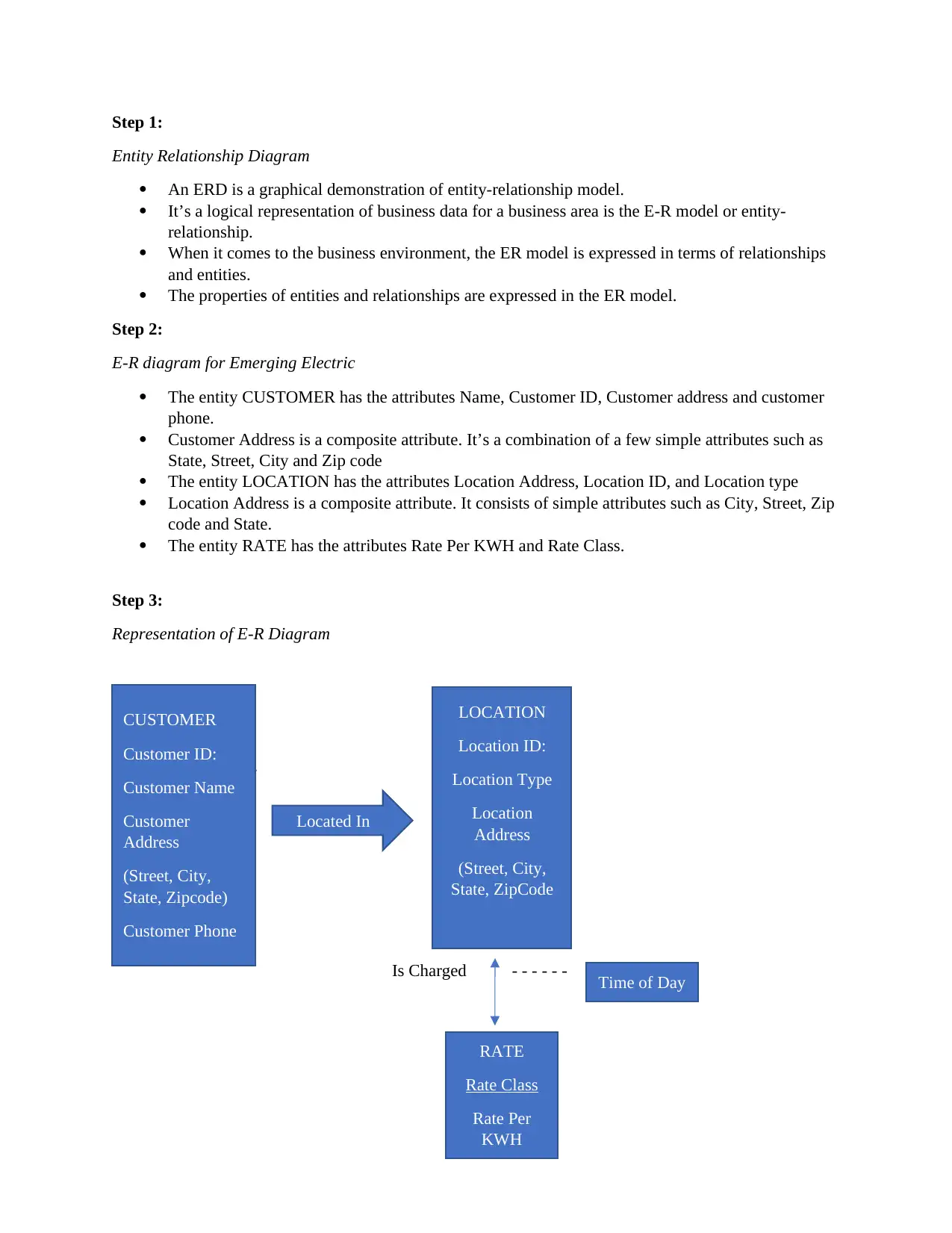Designing an Entity Relationship Diagram for Emerging Electric
VerifiedAdded on 2019/09/23
|2
|401
|250
Report
AI Summary
The assignment content describes the creation of an Entity-Relationship Diagram (ERD) for Emerging Electric. The ERD consists of three entities: CUSTOMER, LOCATION, and RATE. The CUSTOMER entity has attributes such as Name, Customer ID, Customer address, and customer phone, while the LOCATION entity has attributes like Location ID, Location type, and Location address. The RATE entity has attributes Rate Per KWH and Rate Class. The ERD also shows relationships between entities, including 'Located In' (Mandatory Many) between CUSTOMER and LOCATION, and 'Is Charged' (Optional many and Mandatory Many) between LOCATION and RATE.
Contribute Materials
Your contribution can guide someone’s learning journey. Share your
documents today.
1 out of 2








![[object Object]](/_next/static/media/star-bottom.7253800d.svg)